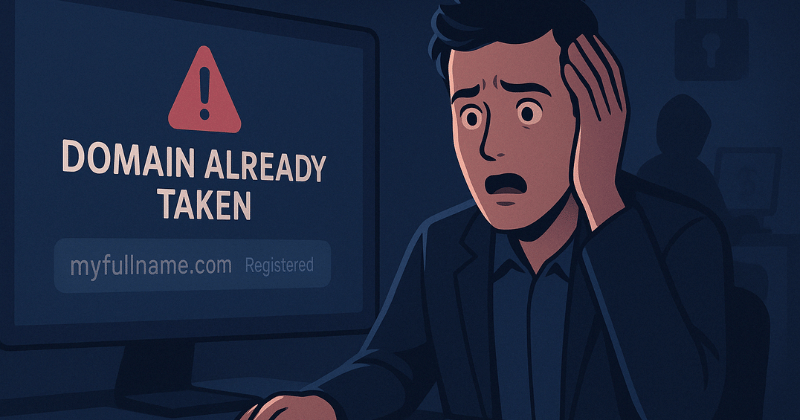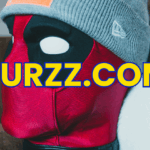1. The Moment You Realize Your Name Is Gone
I typed my name into the search bar. The .com version was taken — not by me, but by someone I didn’t know. Worse, it was listed for sale… for thousands of dollars.
My name, my brand, my digital identity — held hostage.
This wasn’t just a case of bad timing. It was cybersquatting.
Sound familiar?
This scenario plays out every day for professionals, entrepreneurs, content creators, and even small businesses.
It’s called cybersquatting, and if it hasn’t happened to you yet, it might — unless you take steps now.
2. What Is Cybersquatting?
Cybersquatting is when someone registers a domain name that includes a recognizable name, trademark, or brand — with no legitimate reason for ownership — often intending to resell it at a high price.
It’s a form of digital exploitation.
However, it is important to distinguish bad-faith cybersquatting from ethical domain investing.
Many domain investors add real value by curating high-quality, brandable domains that help businesses thrive.
Ethical domain investors focus on discovering future-forward names, helping brands avoid poor naming decisions, and offering domain options that unlock opportunities.
Ethical domain investing is transparent, proactive, and opportunity-driven — not reactive or exploitative.
These professionals operate with integrity, often assisting startups and brand owners in securing a strong digital foundation.
They are the opposite of cybersquatters, who register domains in bad faith with no legitimate use, often demanding high prices from individuals or companies who already have rights to that name.
To better understand the difference, we recommend reading:
Many ethical domain investors add real value by curating high-quality, brandable domains that help businesses thrive.
However, cybersquatting refers specifically to registering personal names or trademarks with the intent to block or extort the rightful owner.
3. Stories of Losses: How Cybersquatting Hurts
Take the case of “Emily Rivera” — a fictional example inspired by real events.
She’s a personal brand coach from Austin, Texas, who had gained thousands of followers on TikTok and Instagram.
But when she finally went to register her name as a .com, it was gone.
Who took it? Not another Emily.
Someone else had scooped it up and listed it for $3,500.
With no trademark registered yet, Emily had few legal options.
She either had to buy it at the inflated price or settle for a less impactful name like EmilyRiveraOnline.com.
This isn’t just an inconvenience. It’s a brand loss.
Another case: A startup founder from Chicago delayed registering the domain for his upcoming product, assuming it would still be available after their seed funding.
Instead, he ended up in a six-month-long UDRP complaint process, spending legal fees that could have gone to product development.
These situations are not rare.
They represent one of the most common (and costly) domain name mistakes business owners make — and we’ve documented real-world examples in this guide:
Top 10 Real-Life Domain Name Mistakes That Could Cost Your Business More Than You Think
4. The True Cost of Losing Your Name
The impact of cybersquatting runs deeper than just a domain. It affects your bottom line, your visibility, and your credibility.
Financial Consequences
- Premium domain resale prices can reach thousands or even millions
- Filing a domain name dispute through UDRP or hiring an IP attorney can add legal costs
Branding Damage
- Losing your ideal .com creates confusion for customers
- Having to use alternatives (like dashes, longer names, or unusual TLDs) may weaken your SEO and brand consistency
Legal Complexities
- Cybersquatting laws vary by country
- Without a registered trademark, reclaiming the domain becomes much harder
- Even with a trademark, you’ll need to prove bad faith and lack of legitimate interest
- If you believe your domain name was stolen, there are legal pathways available for recovery
Ultimately, it all boils down to this: Your domain name is your brand’s first impression.
Own it – Protect it!
5. What to Do If Someone Registered Your Name
Discovering that your name has been taken is frustrating, but there are practical steps you can take to recover a stolen domain name or negotiate a return.
Step 1: Identify the Owner
Use a WHOIS lookup tool to see who owns the domain. You may find an email address, company name, or proxy service. If they’re using privacy protection, a registrar email can still forward your message.
Step 2: Reach Out Professionally
Send a calm, professional inquiry expressing interest in acquiring the domain. Avoid showing desperation or aggression. That only encourages a higher asking price.
Step 3: Evaluate Legal Options
- If you own a trademark, you may have grounds to file a UDRP complaint through ICANN
- Consider reaching out to an IP lawyer who specializes in domain name disputes
- In extreme cases, a legal notice may trigger a domain transfer
Step 4: Use a Safe Negotiation Service
If the owner responds and is open to a deal, use a trusted escrow platform like Escrow.com to ensure secure payment and transfer.
Step 5: Secure Alternatives
If the original domain is unreachable or overpriced:
- Try variations like GetYourName.com or YourNameOfficial.com
- Explore local TLDs (.ph, .co.uk) or purpose-based domains (.me, .coach, .studio)
- Most importantly, secure your domain across multiple extensions to avoid future vulnerabilities
6. Protecting Your Digital Identity Early
This situation could have been avoided. That’s the real lesson here.
If your domain name is still available, register it immediately. If your brand is emerging or you plan to scale, grab the .com, .net, and relevant extensions now.
Whether you’re building a brand, applying for jobs, launching a startup, or just protecting your name — buy your domain name now before someone else does.
Waiting too long to secure your domain is one of the most common (and costly) domain name mistakes business owners make.
We’ve documented real-world examples in this guide:
Top 10 Real-Life Domain Name Mistakes That Could Cost Your Business More Than You Think
We’ve also written about how to take proactive steps to avoid unethical domain conflicts and ensure strong digital identity protection.
Dive deeper into these related reads:
- Why You Should Buy Your Domain Name Early
- What Is Ethical Domain Investing?
- How Ethical Domain Investors Help Brands
7. Own Your Name Before Someone Else Does
In today’s digital economy, your domain is more than just a URL. It’s your professional handshake.
Your brand foundation. Your personal billboard.
You only get one true name — one chance to control your digital identity. Don’t let someone else own it before you do.
If your domain has already been taken, don’t panic.
You still have options. But if it’s available?
Grab it.
Now.
Protect your domain name. Protect your domain brand name. Protect your future.













